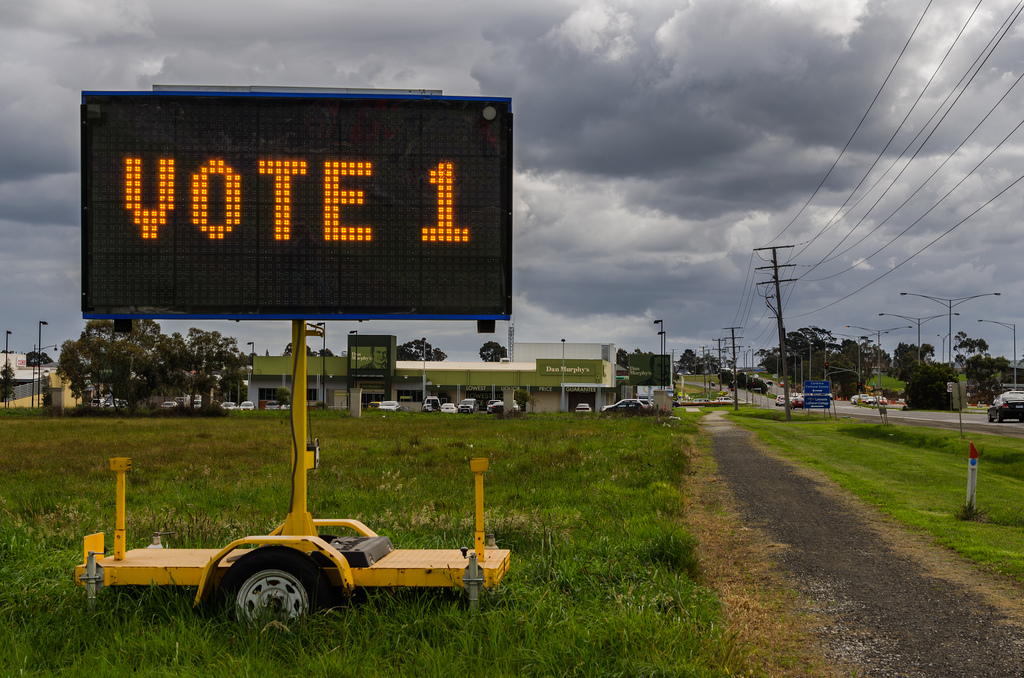The Australian Electoral Commission appears to be taking tentative steps towards having electronic vote scanning and counting at the next general election.
The Commission has called for requests for expressions of interest (REI) for companies to provide advice on ballot paper scanning and counting technology to use in the House of Representatives ballot in the 2016 general election but the technology would not be used widely, instead being run as a pilot project in a handful of polling booths.
The REI is at pains to point out: “this is not a request for tender. The AEC intends to initiate a multi-stage procurement process for the required services.
“The AEC would appreciate advice from the market regarding the minimum number of tabulators to provide a reasonable (cost effective) pilot.”
Some Australian states already use electronic vote counting and electronic voting to some degree.
The ACT has used electronic vote counting, which tallies electronic votes and paper ballots, since the 2001 election. By the 2008 election the ACT employed an intelligent character recognition scanning system to capture preferences on paper ballots, alongside intensive manual checking for accuracy.
Victoria uses electronic voting for its parliamentary elections and NSW trialled it for remote and visually impaired voters at the last election – as has Tasmania – and the AEC itself used it for military personnel overseas and for visually impaired voters in 2007.
Government News spoke to the Managing Director of Software Improvements Carol Boughton, whose company manages the software for electronic voting in ACT, about what the Commission’s call for REI into electronic vote scanning and counting might mean.
Ms Boughton said she was not surprised that the AEC’s call of expressions of interest seemed a little tentative.
“The politicians are very nervous about using electronic things and the AEC is walking softly softly,” she said.
“I think they’re right to be nervous. There are quite a few things that can go wrong but the main thing is that you really have to be able to make sure, before you go anywhere near a trial, that your electronic system is doing exactly what it’s meant to do and you’re preferably using some kind of software language that’s more reliable than Microsoft.”
She said electronic vote counts had advantages, including that the results were revealed much faster.
“If you ensure that the scanning is accurate then you do actually end up with a more reliable count because you’re not relying on people putting paper into the right piles for counting.”
Voting rules can also be built into the system according to each jurisdiction. For example, if a voter has failed to number only the last box on the ballot the system can be told to still recognise this as a formal vote.
But Ms Boughton said that electronic vote counting was unlikely to be a precursor to electronic voting any time soon.
“If you’re going to go down the scanning route this is the least hazardous option for the moment. I think once they’ve got that in place they will obviously use that for a few years to get a return on their investment so I wouldn’t expect to see electronic voting coming in more broadly for some time.
“It’s less costly and less risk, from a political point of view.”
A second interim report by the Electoral Matters Committee in 2014 concluded that full electronic voting was too risky, complicated and expensive. The Committee cited several problems it could see with electronic voting, including the difficulty of preserving confidentiality and anonymity, the possibility of multiple voting and hacking.
Committee chairman Tony Smith MP said then:
“After hearing from a range of experts, and surveying the international electoral landscapes it is clear to me that Australia is not in a position to introduce any large – scale system of electronic voting in the near future without catastrophically compromising our electoral integrity.”
But the same report also recommended the government proceed with electronic vote counting.
“We should start to introduce electronic scanning of ballot papers,” Mr Smith said.
He said this would enable an electronic count “the results of which would be delivered minutes after the close of the polls.”
The same physical count that occurs now would still be performed for verification, Mr Smith said.
“Such a system would offer faster results, at a manageable cost without any of the risks or comprises of electoral integrity of stand-alone electronic voting.
“Indeed, it would provide a checking mechanism, providing a measure of surety to the count,” Mr Smith said.
It seems impossible to conceive that such an expensive, clunky, labour-intensive system as voting is will not be subject to the same march of electronic progress that other areas of government have been subject to: witness the move towards an e-Census and the Express Plus mobile for Medicare and Centrelink.
“Our frustration is we haven’t been able to get other electoral commissions in Australia to take it (electronic voting) on,” Ms Boughton said.
“As the years go by and you have a population that’s more used to doing things electronically they may not necessarily have the same concerns about the problems that can arise with electronic voting.”
Comment below to have your say on this story.
If you have a news story or tip-off, get in touch at editorial@governmentnews.com.au.
Sign up to the Government News newsletter
Most read
Scathing report finds little has changed at PwC
Qld council welcomes progress on massive battery system
‘Local’ procurement turns out not to be so local, committee hears
Another report finds local government falling down on cyber security
MoG changes see regions, investment return to NSW Premier’s Department

